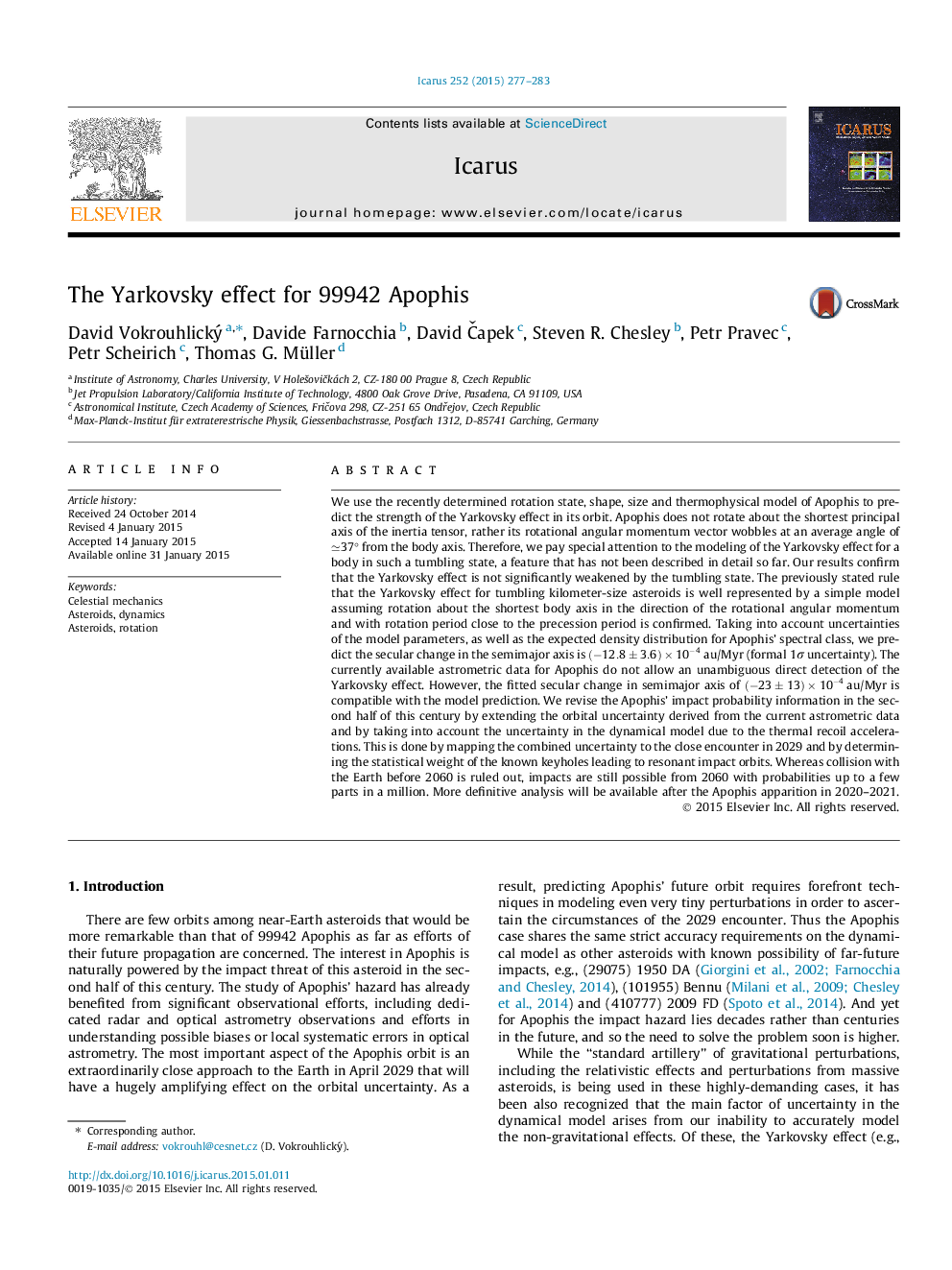| کد مقاله | کد نشریه | سال انتشار | مقاله انگلیسی | نسخه تمام متن |
|---|---|---|---|---|
| 8136549 | 1523538 | 2015 | 7 صفحه PDF | دانلود رایگان |
عنوان انگلیسی مقاله ISI
The Yarkovsky effect for 99942 Apophis
ترجمه فارسی عنوان
اثر یارکوفسکی برای 99942 آپوفیس
دانلود مقاله + سفارش ترجمه
دانلود مقاله ISI انگلیسی
رایگان برای ایرانیان
کلمات کلیدی
مکانیک آسمانی، سیارک ها، دینامیک، سیارک ها، چرخش،
موضوعات مرتبط
مهندسی و علوم پایه
علوم زمین و سیارات
علوم فضا و نجوم
چکیده انگلیسی
We use the recently determined rotation state, shape, size and thermophysical model of Apophis to predict the strength of the Yarkovsky effect in its orbit. Apophis does not rotate about the shortest principal axis of the inertia tensor, rather its rotational angular momentum vector wobbles at an average angle of â37° from the body axis. Therefore, we pay special attention to the modeling of the Yarkovsky effect for a body in such a tumbling state, a feature that has not been described in detail so far. Our results confirm that the Yarkovsky effect is not significantly weakened by the tumbling state. The previously stated rule that the Yarkovsky effect for tumbling kilometer-size asteroids is well represented by a simple model assuming rotation about the shortest body axis in the direction of the rotational angular momentum and with rotation period close to the precession period is confirmed. Taking into account uncertainties of the model parameters, as well as the expected density distribution for Apophis' spectral class, we predict the secular change in the semimajor axis is (-12.8±3.6)Ã10-4 au/Myr (formal 1Ï uncertainty). The currently available astrometric data for Apophis do not allow an unambiguous direct detection of the Yarkovsky effect. However, the fitted secular change in semimajor axis of (-23±13)Ã10-4 au/Myr is compatible with the model prediction. We revise the Apophis' impact probability information in the second half of this century by extending the orbital uncertainty derived from the current astrometric data and by taking into account the uncertainty in the dynamical model due to the thermal recoil accelerations. This is done by mapping the combined uncertainty to the close encounter in 2029 and by determining the statistical weight of the known keyholes leading to resonant impact orbits. Whereas collision with the Earth before 2060 is ruled out, impacts are still possible from 2060 with probabilities up to a few parts in a million. More definitive analysis will be available after the Apophis apparition in 2020-2021.
ناشر
Database: Elsevier - ScienceDirect (ساینس دایرکت)
Journal: Icarus - Volume 252, 15 May 2015, Pages 277-283
Journal: Icarus - Volume 252, 15 May 2015, Pages 277-283
نویسندگان
David Vokrouhlický, Davide Farnocchia, David Äapek, Steven R. Chesley, Petr Pravec, Petr Scheirich, Thomas G. Müller,
